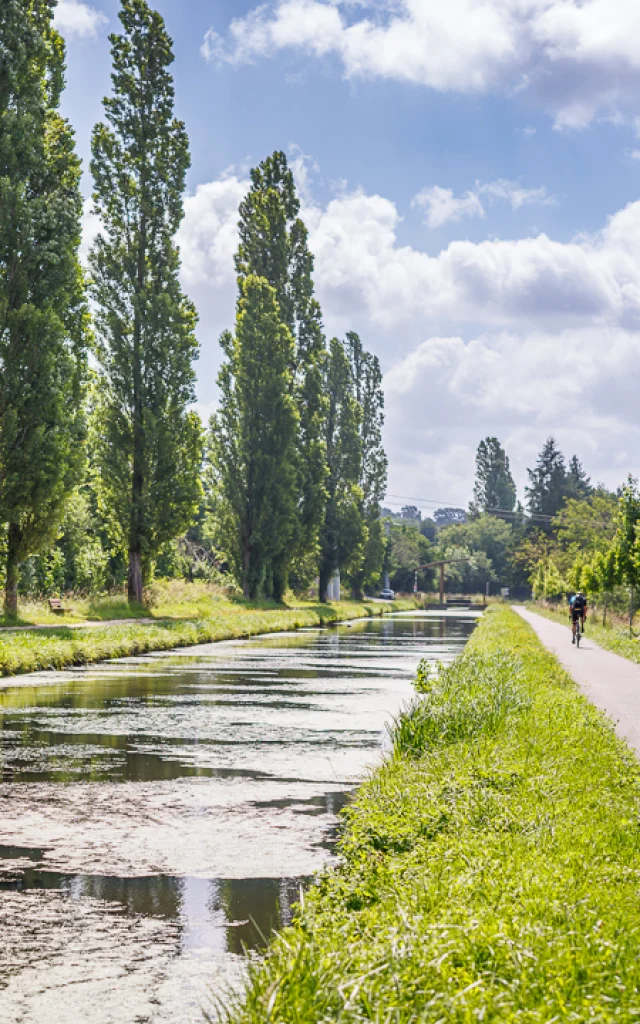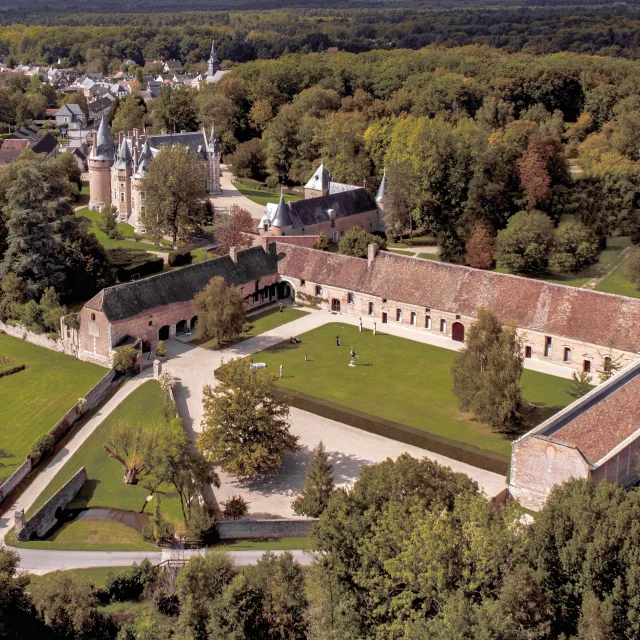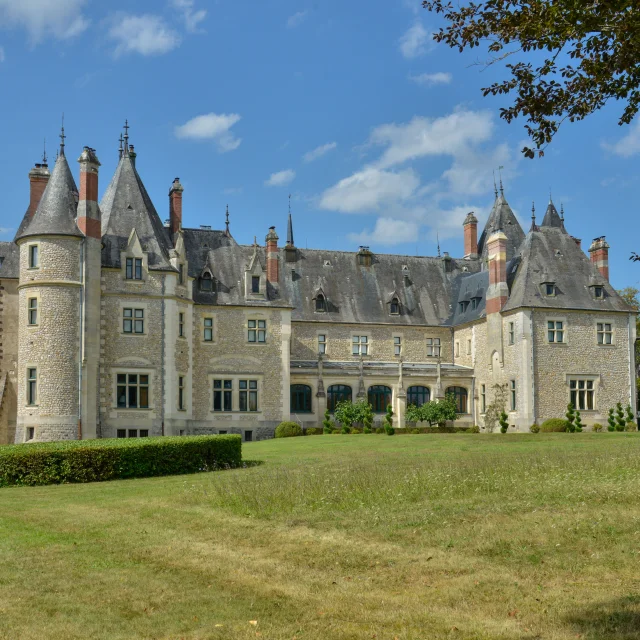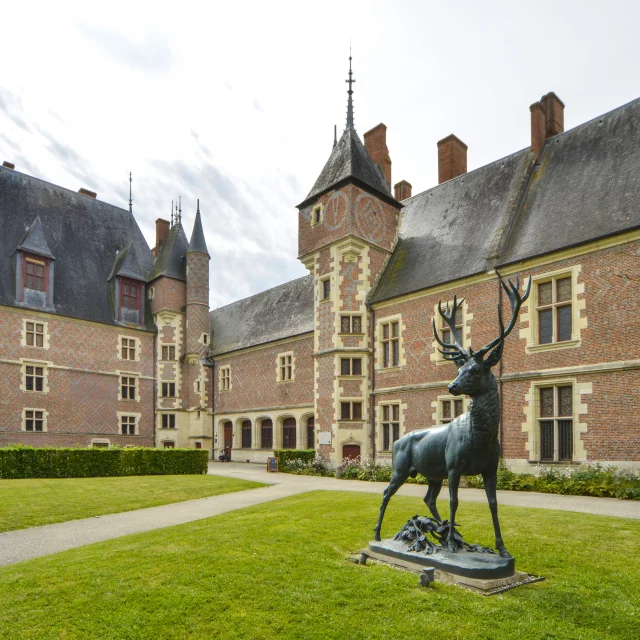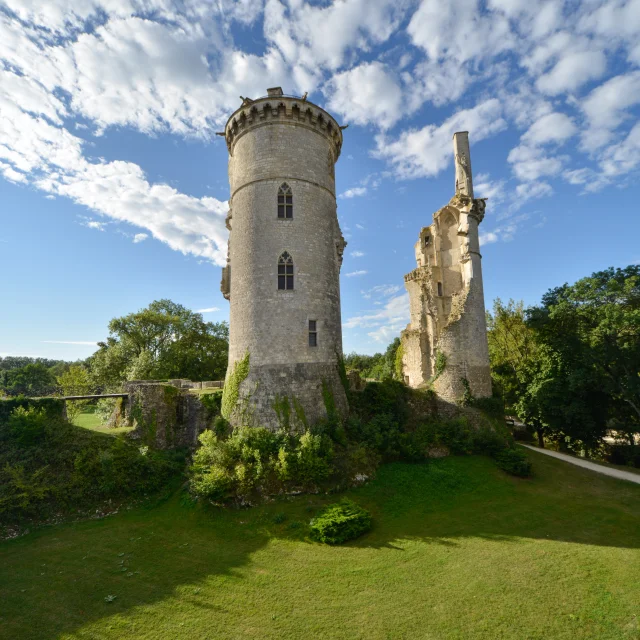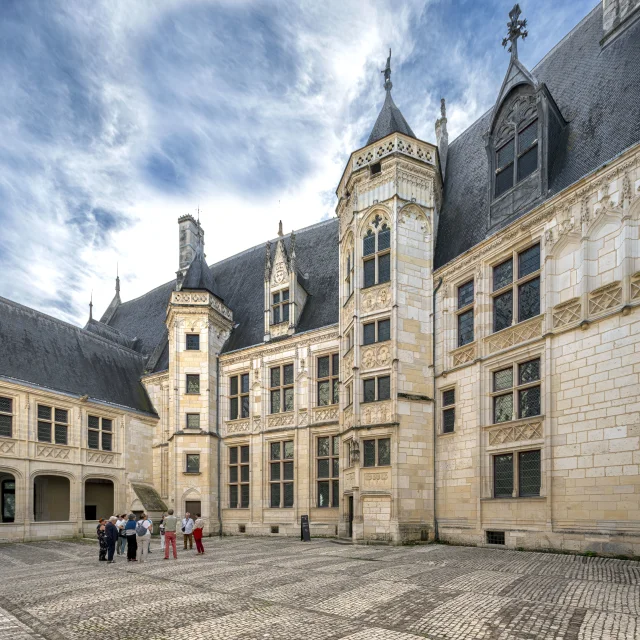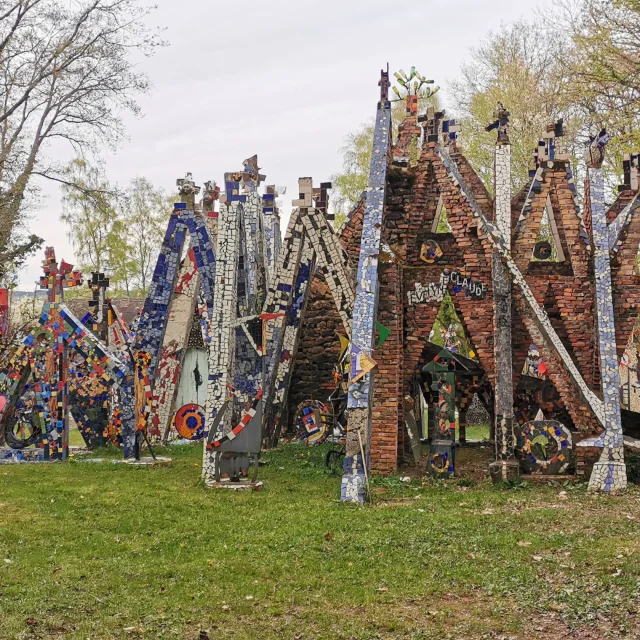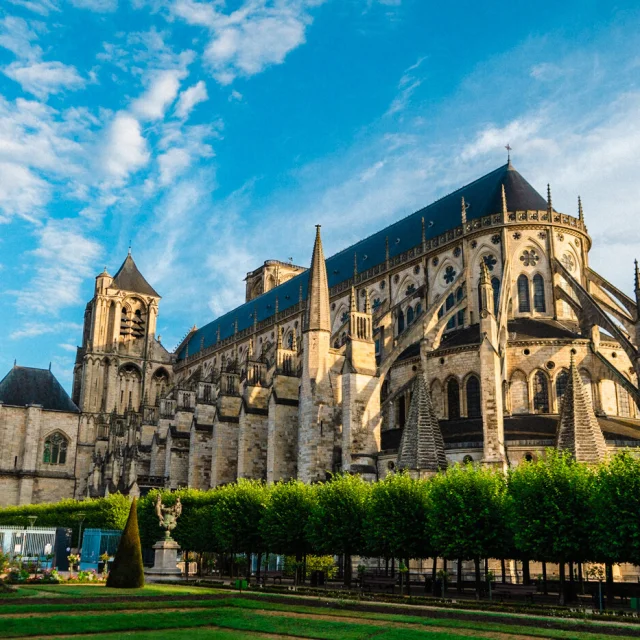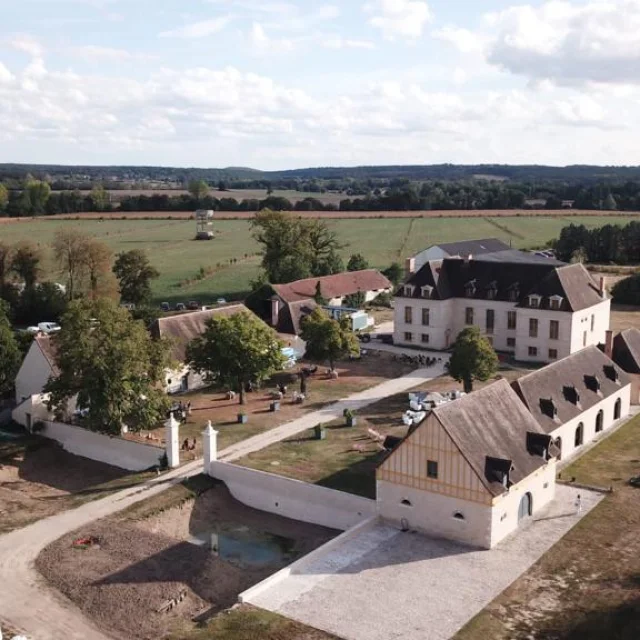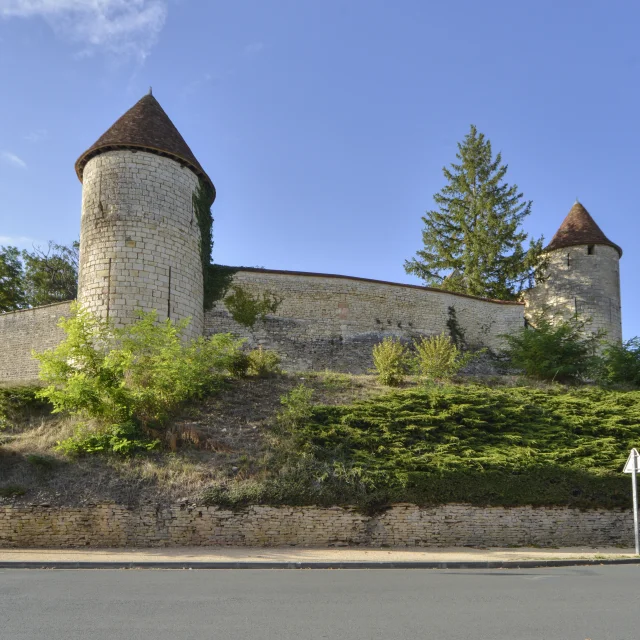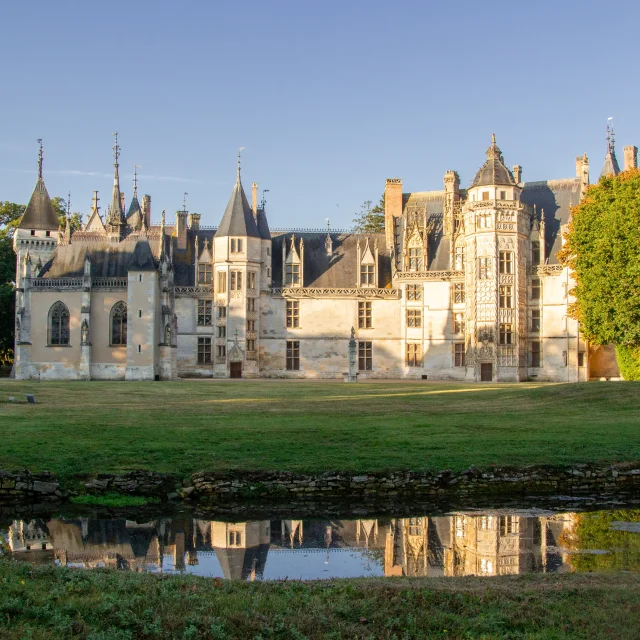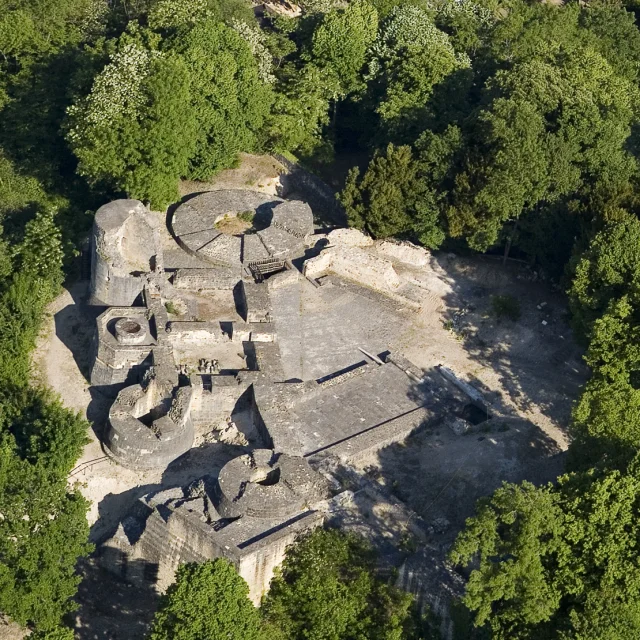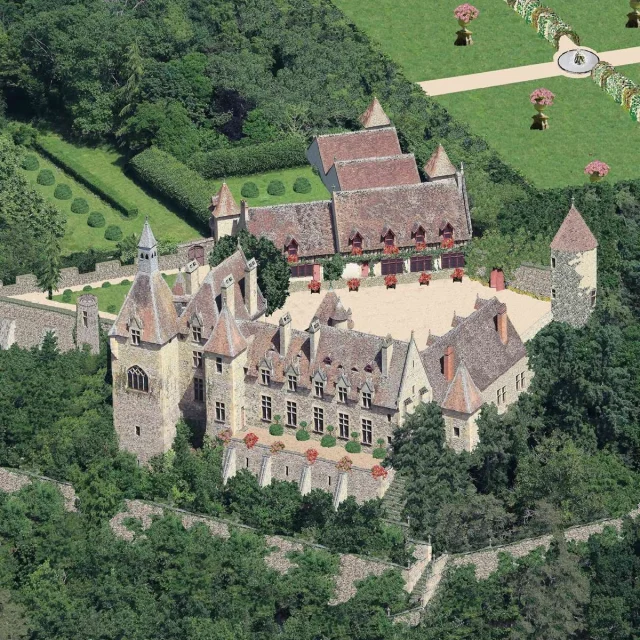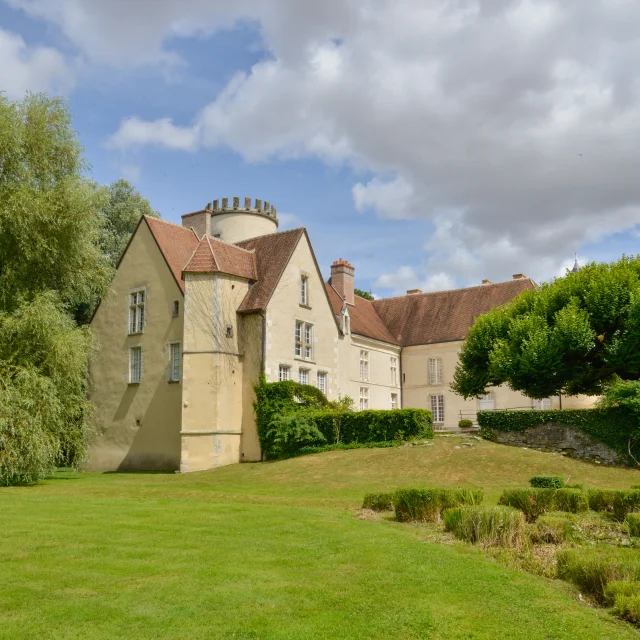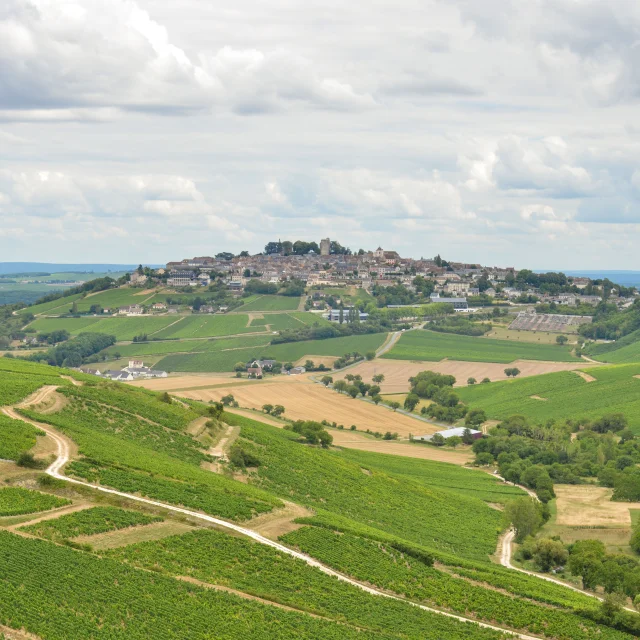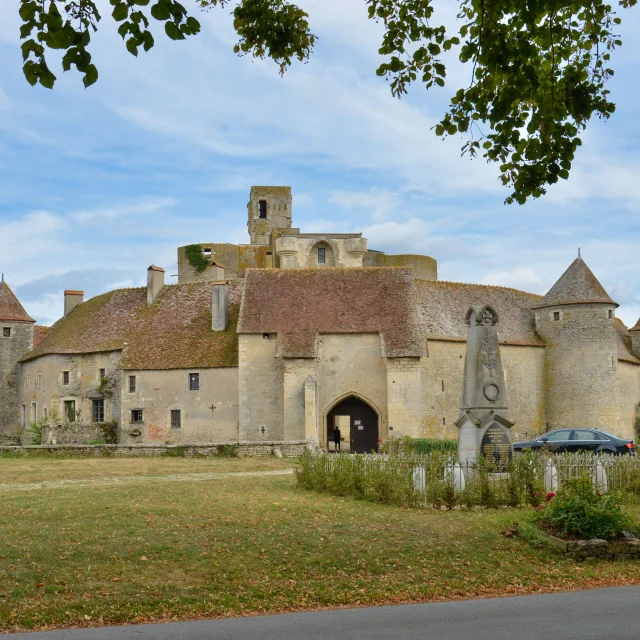 Bourges, Statue Jacques Cœur|Ad2t du Cher
Bourges, Statue Jacques Cœur|Ad2t du CherThe history of the Route Jacques Cœur
The Route Jacques Cœur, the first of France’s historic routes, was created in 1954, on the initiative of three property owners: the Marquis de Mortemart at Meillant, Baron Géraud d’Aligny at Ainay-le-Vieil and Jean Ferragut at Culan.
These intrepid souls wanted to open up their properties to a curious public, likely to appreciate privately-owned historic monuments and contribute to their upkeep. The Second World War was over. The country had reclaimed its ruins, restored and modernized its infrastructure. Tourism had a bright future ahead of it. The idea was a good one, especially as the châteaux of the Loire were attracting more and more visitors.
And, because Chambord had just set the example for the world’s first (in 1952?) sound and light show, the dynamic promoters from the Berry region proposed three, right from the day the circuit was inaugurated on June 26, 1954.
Today, with its success, the Route Jacques Cœur brings together castles, museums, Bourges Cathedral and Noirlac Abbey around the palace of the famous Argentier. It is presented here in its geographical configuration, its historical ambiences, its affinities with Jacques Cœur, an emblematic 15th-century figure, and the many and varied openings it offers along a 180-kilometer route right in the heart of France.
Excerpt from “La Route Jacques Cœur” – Jean-Yves Ribault
The Route links various sites in the region where Jacques Cœur was born. It’s located in the heart of France, once the scene of military battles between the English, Armagnacs and Burgundians. Today, the region is a hub for tourism and cultural exchange. Fortresses, castles and towers bear witness to a past alternating between war and peace. All these places are exemplary for their architecture, their history and the great figures who have passed through them. This cultural heritage is set in natural, unspoilt landscapes – Sologne, Sancerrois, Champagne berrichonne, Boischaut.
The sites implement innovative events and projects to promote memory, history and heritage. The activities on offer also focus on more contemporary culture, craftsmanship and the arts, and are constantly evolving to the delight of visitors, helping to boost Berry’s appeal as a tourist destination.
Over the past 70 years, the Route Jacques Cœur has retained the values and innovative spirit of its 3 founding private owners, helping visitors to discover places steeped in history and to safeguard them. The association is chaired by Martine d’Aligny and run by Magalie Griffonnet, communications manager.
Privilege Pass
Discover the Route Jacques Cœur loyalty program and benefit from over €95 in cumulative savings on all Pass sites, so you can visit at a smart price!
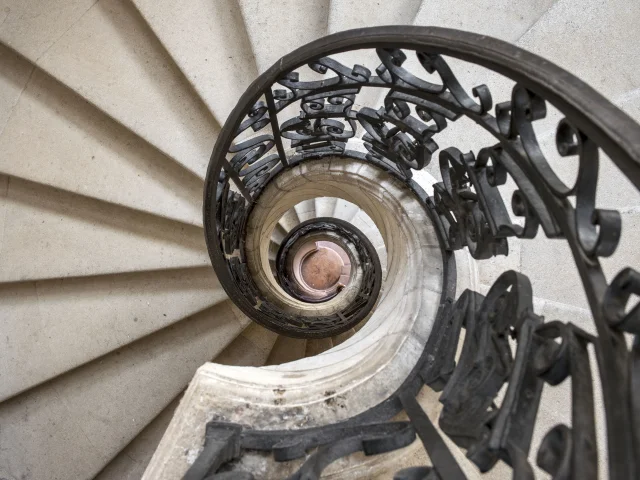 Palais Jacques Cœur|Patrick Tournebœuf-Tendance floue, Centre des monuments nationaux
Palais Jacques Cœur|Patrick Tournebœuf-Tendance floue, Centre des monuments nationauxToday, the Route Jacques Cœur has 21 members, on an itinerary that crosses the Cher department:
- 10 châteaux: Ainay-le-Vieil, La Chapelle d’Angillon, La Verrerie, Meillant, Menetou-Salon, Pesselières, Peufeilhoux (Allier) and Sagonne, the Château-Musée de Gien (Conseil départemental du Loiret) and the Domaine de ChâteauFer,
- 4 emblematic sites: Noirlac Abbey (Conseil Départemental du Cher), Jean Linard Cathedral, Galerie Capazza and Palais Jacques Cœur (Centre des Monuments Nationaux),
- 7 towns and villages: Argent-sur-Sauldre, Aubigny-sur-Nère, Bourges, Dun-sur-Auron, Mehun-sur-Yèvre, Saint-Amand-Montrond and Sancerre.
The Route Jacques Cœur is also supported by its institutional partners: Ad2T (Tourisme et Territoires du Cher), Atout France, Berry Province, Bourges 2028, the Centre des Monuments Nationaux, the Conseil Départemental du Cher, the Conseil Départemental du Loiret, the Communauté de Communes du Cœur de France, the Communauté de Communes du Dunois, the Communauté de Communes du Pays Fort Sancerrois and the Pays Berry Saint-Amandois.
Follow the Route Jacques Cœur on its networks:
Association Route Jacques Cœur
Place Simone Veil 18000 BOURGES
contact@routejacquescoeur.fr
07 80 76 14 13
Our members
Castles, abbeys, gardens and towns have joined the itinerary, which crosses the Cher department from north to south, with 21 member sites and towns.
Berry - Côté Sologne
Bourges and surrounding area
Destination Sud Berry
Sancerre Bords de Loire
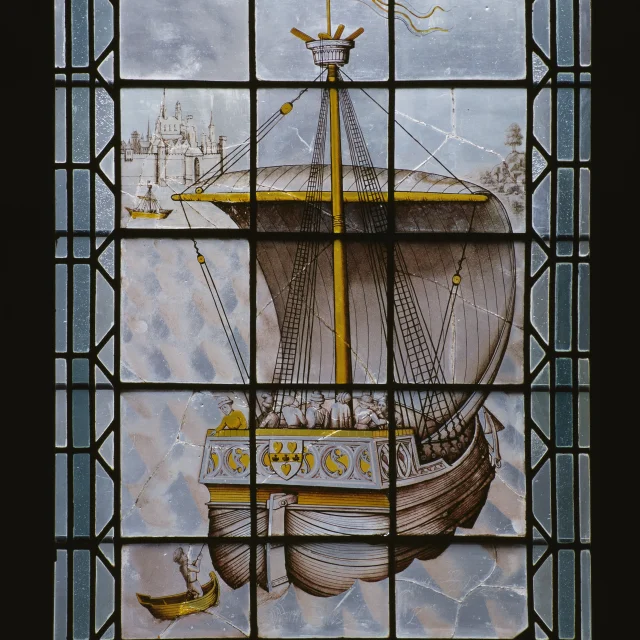 Palais Jacques Cœur|Philippe Berthé, Centre des monuments nationaux
Palais Jacques Cœur|Philippe Berthé, Centre des monuments nationaux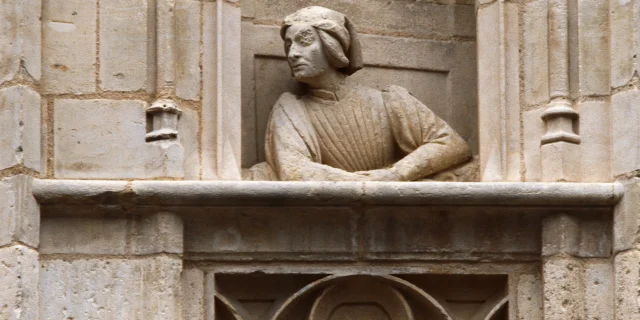 Palais Jacques Cœur|Philippe Berthé, Centre des monuments nationaux
Palais Jacques Cœur|Philippe Berthé, Centre des monuments nationauxThe story of Jacques Cœur (1395-1456)Treasurer to King Charles VII
In a few words
Jacques Cœur was the son of a shovel-maker who supplied the Duke of Berry’s court in Bourges.
He was born at a time of turmoil, during the Hundred Years’ War, which deeply divided the country. Devoted to the “King of Bourges”, he rubbed shoulders with Joan of Arc, and was the confidant of Agnès Sorel, the king’s mistress.
The early 15th century was a turning point between the Middle Ages and the Renaissance. A businessman and banker, Jacques Cœur helped build a new future for France by promoting trade, particularly with Italy and the Orient.
Jacques Cœur’s commercial “empire” did not survive him, but the royal monopolies he established benefited the state. He made a major contribution to restoring the kingdom’s financial and monetary order. Thanks to his loans of money and supply of arms, he enabled the King of France to maintain standing armies that retook Normandy and then Guyenne from the English.
Jacques Cœur : grandeur et décadence
Jacques Cœur was born in Bourges in 1395. His family, originally from the Allier region, had settled in Bourges to expand their trading business.
His father supplied fur to Duke Jean de Berry. When the dauphin, the future Charles VII, settled in Bourges in 1418, the Berry bourgeoisie saw positions opening up in his entourage.
Jacques Cœur married Macée de Léodepart, granddaughter of the Master of the Mint, and joined the company in 1429. He speculated on the quantity of precious metal contained in the coins he produced, for which he was condemned and later granted a royal pardon.
In the early 1430s, he became a supplier to the court, which he supplied with products from the Levant. His trip to the Orient in 1432 is said to have ended in failure.
Visit the Palais Jacques Cœur
Go directly to his page.
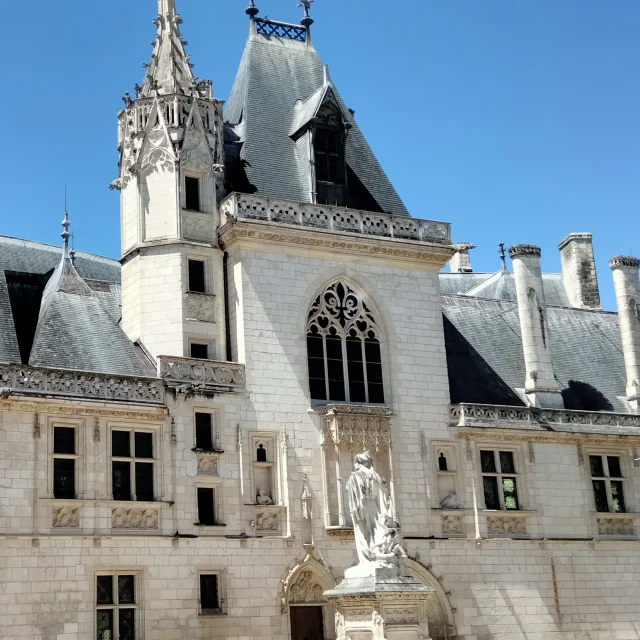 Palais Jacques Cœur|Centre Des Monuments Nationaux
Palais Jacques Cœur|Centre Des Monuments NationauxA meteoric rise
In 1439, he took up the post of Argentier, which he held until his downfall in 1453, and which ensured a large part of his fortune.
His role was to ensure the sovereign’s day-to-day expenses, which led him to make advances to the treasury and control the court’s supply channels. For this clientele, Jacques Cœur had a number of stores selling fabrics, jewelry, furniture and furs.
In 1440, Jacques Cœur became the king’s commissioner to the States of Languedoc. He was called upon to negotiate taxes for the province, from which he profited personally.
Ennobled in 1441, he joined the royal council. Jacques Cœur took part in the Reconquest by financing the war effort. Taking advantage of the scope of his business, he played a diplomatic role in Genoa, Aragon, Rome and as far afield as Egypt. Captain of numerous strongholds, general visitor of the gabelles, he promoted his son to the archbishopric of Bourges in 1450. His rise to prominence aroused a great deal of jealousy among his fellow merchants in Tours and Montpellier, and among the court nobility, who owed him a great deal of money.
Disgrace, prison and escape
Jacques Cœur was arrested on July 31, 1451 at the Château de Taillebourg on the basis of hastily assembled charges. On May 29, 1453, after a year and a half’s trial at the Château de Lusignan, the sentence was passed: Jacques Cœur was guilty. His assets were confiscated and put into liquidation.
During his trial, Jacques Cœur was charged with murder and crimes of lèse-majesté.
A murder
Jacques Cœur is suspected of having poisoned Agnès Sorel, the favorite of King Charles VII. Yet he had been one of her closest friends and her executor. The doctor cleared him. But in 2005, the remains of Agnès Sorel’s corpse were analyzed and found to contain a very high concentration of mercury: whether a poorly dosed medical remedy or poison, the mystery remains.
Crimes of lèse-majesté
Jacques Cœur was accused of failing to remain loyal to the king, and of directly challenging his authority and honor. He usurped the sovereign’s identity by forging his signature and seal. He issued counterfeit money while in charge of the Bourges workshop in 1429 and 1430, and defrauded two gentlemen charged with arranging the marriage of Charles VII’s daughter to the Duke of Bourbon. Above all, he damaged the kingdom’s interests abroad. He exported silver ingots stamped with the fleur-de-lis to the Levant, trafficking them for their precious metal content; he sold weapons to the Saracens despite the threat they posed to Constantinople; he refused to protect a young slave who had converted to Christianity so as not to harm his commercial interests.
He escaped the death penalty only in recognition of his services to the crown, and above all thanks to the intervention of Pope Nicholas V.
He escaped from his Poitiers gaol on October 27, 1454.
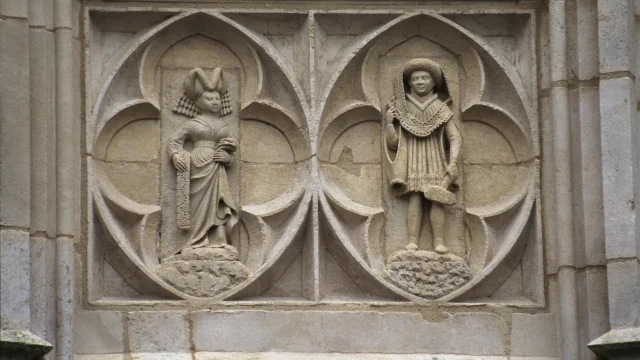 Palais Jacques Cœur|Patrick Müller, Centre des monuments nationaux
Palais Jacques Cœur|Patrick Müller, Centre des monuments nationaux Palais Jacques Cœur |Route Jacques Cœur
Palais Jacques Cœur |Route Jacques Cœur Palais Jacques Cœur, Salle des festins|Patrick Tournebœuf-Tendance floue, Centre des monuments nationaux
Palais Jacques Cœur, Salle des festins|Patrick Tournebœuf-Tendance floue, Centre des monuments nationauxServing the papacy
At the beginning of March 1455, Jacques Cœur was in Rome. From Marseille, he reclaimed a large part of his Mediterranean trading assets, including his four galleys, beyond the King’s jurisdiction. Pope Nicholas V assured him of his protection.
Why is the Pope protecting this French fugitive at the risk of offending Charles VII, one of Europe’s most powerful rulers?
Between 1446 and 1449, strengthened by Charles VII’s confidence in his negotiating skills, Jacques Cœur carried out several diplomatic missions.
He was introduced to Italian affairs by dealing with the Republic of Genoa, then led an embassy to Rome in 1448 to put an end to a new schism. He contributed to the abdication in Savoy of Antipope Felix V in favor of the Roman Pontiff Nicholas V. From then on, the latter never ceased to express his gratitude and friendship to the King of France’s Argentier. Jacques Coeur lost his patron a few weeks after his arrival in Rome.
After Nicholas V’s death, the new Pope Calixtus III took up his predecessors’ idea of launching a crusade against the Turks, who had seized Constantinople two years earlier.
Jacques Coeur put his diplomatic and financial talents at the service of the Holy See to prepare the expedition, and embarked with the fleet that left Ostia on September 23, 1455. The thirty or so ships assembled only temporarily secured the Aegean islands, and it was on the island of Chio that Jacques Cœur died on November 25, 1456.
 Palais Jacques Cœur|Centre Des Monuments Nationaux
Palais Jacques Cœur|Centre Des Monuments NationauxImaginative mottoes and speaking arms were all the rage in the 15th century. Jacques Cœur, recently ennobled, seems to have been inspired by the practices of illustrious figures such as Duke Jean de Berry. But he went even further, using mottoes, hearts and scallops almost systematically, from the monogram associated with his signature to the ornamentation of his palace in Bourges.
To find out more
The use of his name and figure did not disappear with him, but grew as his legend was forged. In 1939, against a backdrop of patriotic mobilization, the great figures of national history were represented in a new series of banknotes issued by the Banque de France. After Sully and Bayard, Jacques Cœur and his palace in Bourges were chosen to illustrate the new 50 franc bill put into circulation in January 1941. The Resistance humorously pastiched the bill to denounce the German Occupation and the collaboration of the Vichy regime.
Today, hospitals, high schools and commercial enterprises bear his name in Bourges, Lyon and Montpellier.
The magnificent residence he had built in the town of Bourges (…) is so beautiful, so decorated with so many ornaments that in all of France, I don’t mean only in the middle aristocracy, but even because of its dimensions, even in the king’s home, one could hardly find a more magnificent residence.
15th-century testimony by Thomas Basin, bishop of Lisieux
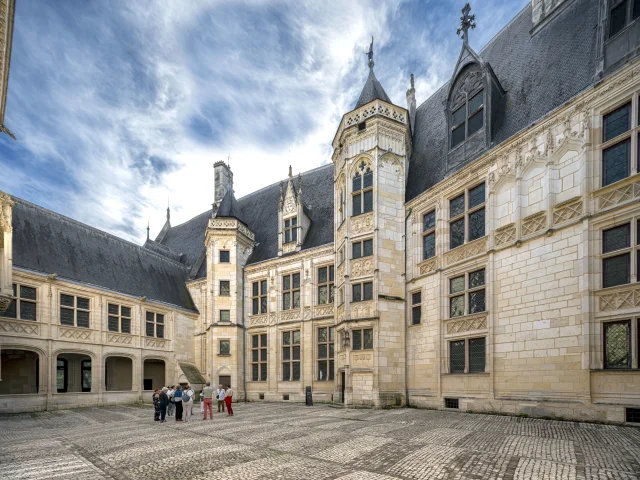 Palais Jacques Cœur|Patrick Tournebœuf-Tendance floue, Centre des monuments nationaux
Palais Jacques Cœur|Patrick Tournebœuf-Tendance floue, Centre des monuments nationaux


